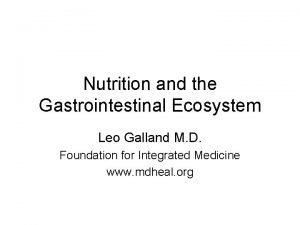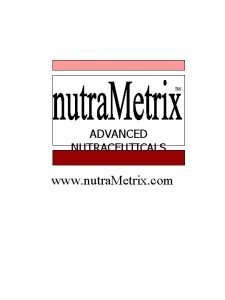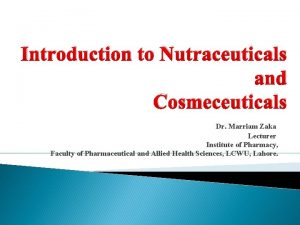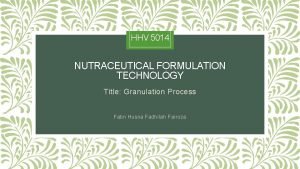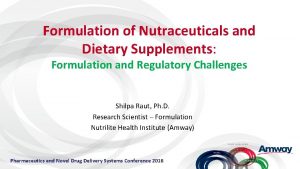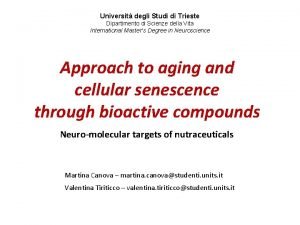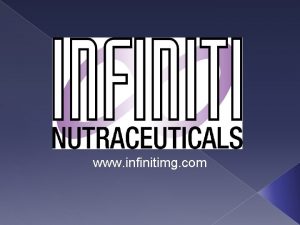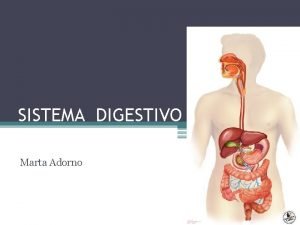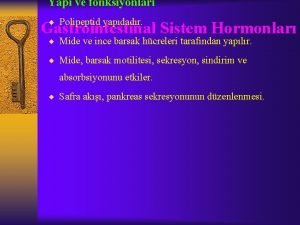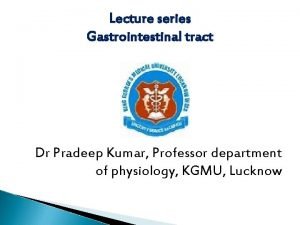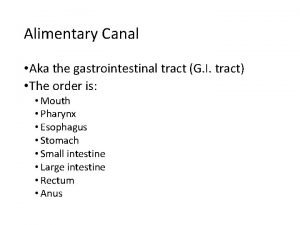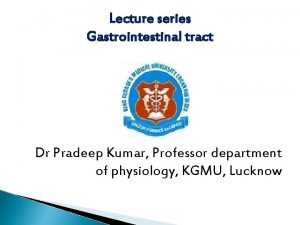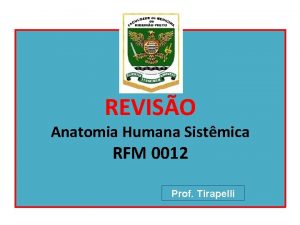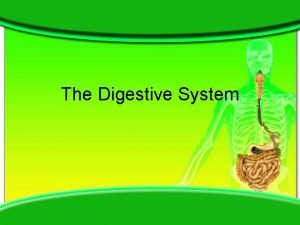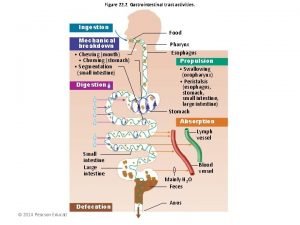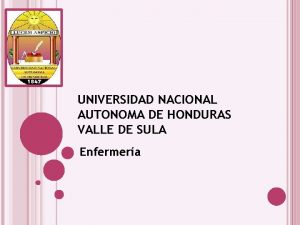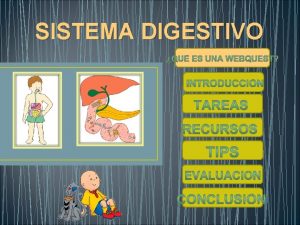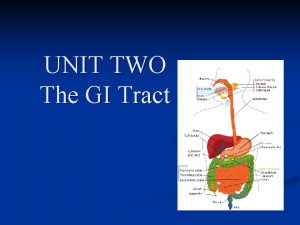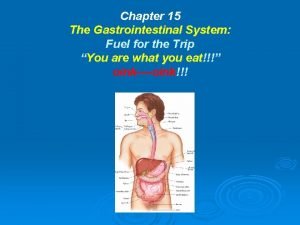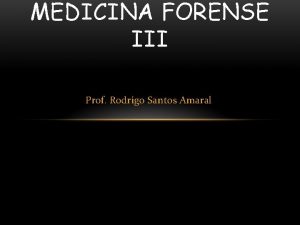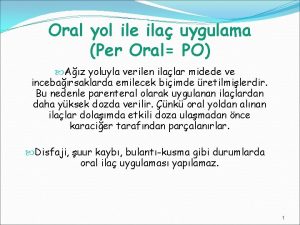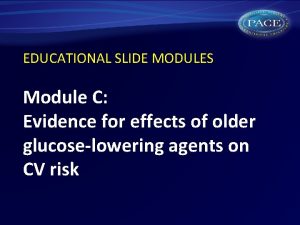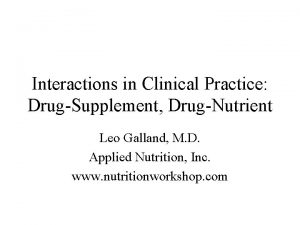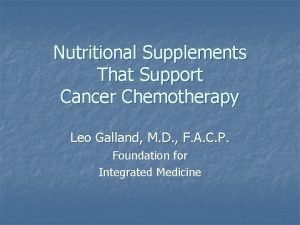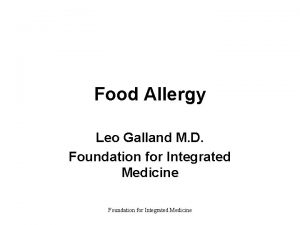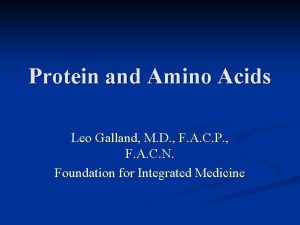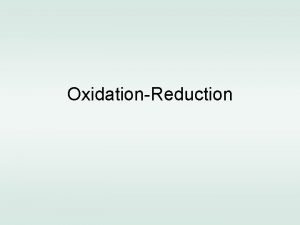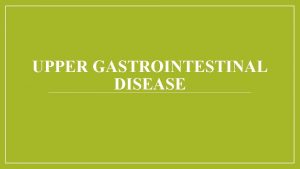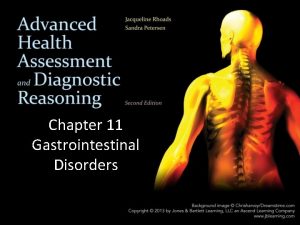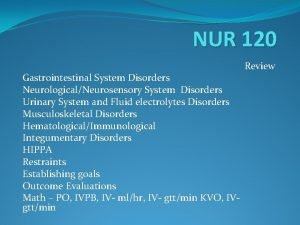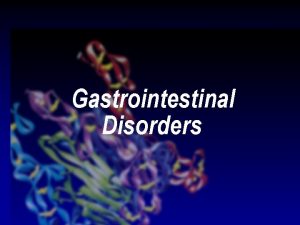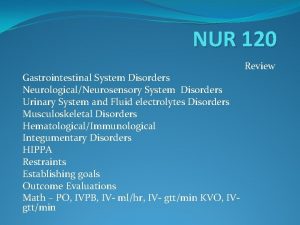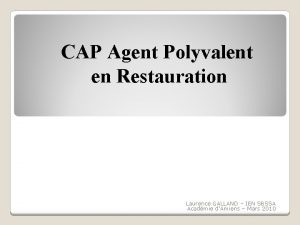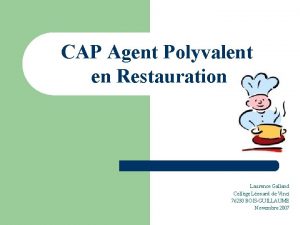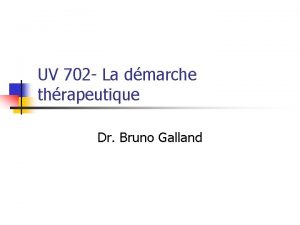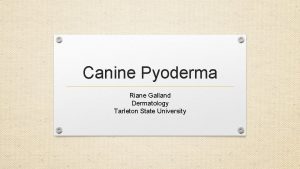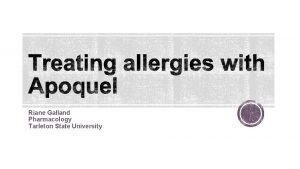Nutraceuticals for Gastrointestinal Disorders Leo Galland M D










































- Slides: 42

Nutraceuticals for Gastrointestinal Disorders Leo Galland, M. D. , F. A. C. P. Foundation for Integrated Medicine www. mdheal. org

Nutraceuticals vs Pharmaceuticals are mostly used to suppress specific physiological functions: PPIs, H 2 blockers, calcium blockers, anticholinergic, antidopaminergic, antiinflammatory, immunosuppressant. § Nutraceuticals may enhance physiologic function, complementing or replacing drugs. Some may act like drugs. n

Esophageal Reflux n n Results from reflex relaxation of the LES in response to gastric vagal mechanoreceptors (programmed in brainstem, unrelated to swallowing or gastric p. H). Post-prandial gastric distension is a key trigger. PPI’s and H-2 blockers convert acid reflux into non-acid reflux. Pepsin and bile present in gastric juice may yet act as esophageal irritants.

Toxicity of Acid Lowering Drugs n n May increase development of atrophic gastritis in H. pylori-infected individuals Allow gastric bacterial/yeast overgrowth and post-prandial intra-gastric production of ethanol and nitrosamines May impair absorption of vitamin B 12, folic acid, carotene, minerals and medication Increase risk of hip fracture and pneumonia

Calcium vs GERD n With acute esophagitis, LES contraction becomes dependent upon extracellular Ca Sohn et al, J Pharmacol Exp Ther. 1997; 283: 1293 -304. n Intra-gastric calcium increases esophageal acid clearance and LES tone, independent of antacid effects, in patients with GERD. Rodriguez-Stanley et al, Dig Dis Sci 2004; 49: 1862 -7

Non-Drug Treatment of GERD n n Small meals eaten slowly in a relaxed fashion to decrease gastric distention. Chewing and swallowing enhance esophageal acid clearance. Calcium citrate 250 mg after each meal Postprandial enzymes Red pepper powder 800 mg t. i. d. Bortolotti et al, NEJM 2002; 346: 947 -8. n Deglycyrrhizinated licorice, aloe, HCl (? )

TJ-43, aka Rikkunshi-to, Liu-Jun-Zi. Tang, Six Gentleman Formula n § Speeds esophageal acid clearance in children with GERD, without increasing LES tone. Kawahara et al, Pediatr Surg Int. 2007 Stimulates gastric emptying in dyspeptic adults. Tatsuta & Iishi, Aliment Pharmacol Ther. 1993 § Increases gastric NO production in rats. Arakawa et al, Drugs Exp Clin Res. 1999 § Raises plasma gastrin and somatostatin in human volunteers. Naito et al. Biol Pharm Bull. 2001

TJ-43 Components Atractylodes lanceae rhizome n Ginseng root n Pinellia tuber n Hoelen n Zizyphus (jujube) fruit n Aurantii nobilis pericarp (orange peel) n Glycyrrhizae (licorice) root n Zingiberis (ginger) rhizome Hesperidin and L-arginine are major ingredients n

STW 5 (Iberogast) Relieves Symptoms of Functional Dyspepsia n n Iberis amara: prokinetic effects comparable to metoclopramide and cisapride without CNS/cardiotoxicity Spasmolytic herbal extracts: German chamomile, angelica root, caraway, lemon balm, milk thistle, celandine, licorice, peppermint leaf. Von Armin et al, Am J Gastroenterol. 2007 Meltzer et al, Aliment Pharmacol Ther. 2004

ASA/NSAID Gastropathy/Enteropathy n Protective supplements (human trials): Vit C 500 -1000 mg bid SAMe 500 mg/day Cayenne 20 grams Deglycyrrhizinated licorice 350 mg tid Colostrum 125 mg tid L-glutamine 7 grams tid

Gastroprotection: Cayenne n n n Cayenne protects against aspirin-induced gastric mucosal damage in humans at a dose of 20 g administered 30 minutes before 600 mg of aspirin. Yeoh et al, Dig Dis Sci 1995. Capsaicin is gastroprotective against a range of mucosal toxins in rats but may exert its effects by irritant-induced pre-conditioning, stimulating gastric mucus secretion. Patients with recurrent/chronic abdominal pain, cayenne aggravates 25 -50%. Kang et al, Gut 1992

Gastroprotection: Vitamin C n n n ASA inhibits absorption of vitamin C ASA 400 mg bid for 3 days depletes intragastric vitamin C, suppresses gastric blood flow, SOD, GPx. Prevented by Vitamin C 480 mg b. i. d. Healthy volunteers: n n Adding C reduced ASA-induced gastric lesions C 1000 mg b. i. d. for 3 days prevented ASA-induced duodenal injury

Gastroprotection: SAMe n S-adenosylmethionine (500 mg) given with aspirin (1300 mg) reduced by 95% the extent of aspirin-induced erosive gastritis in a single-dose study of healthy volunteers. Laudanno et al, Acta Gastroenterol Latinoam 1984. n n Similar protective effects have been demonstrated in rats. Yet, the most common side effect of SAMe is abdominal pain.

H. Pylori Inhibition in vitro n n Mastic gum (P lentiscus), used for treatment of dyspepsia, kills H. pylori, but failed a clinical trial Raw garlic and aqueous garlic extract inhibit growth (thiosulfinate, MIC of 40 mcg/ml) Sulforaphane (cabbage and broccoli) has MIC of <4 mcg/ml (cabbage juice and broccoli sprouts have been used to treat PUD) Lactobacilli inhibit growth

Adjunctive Therapy of H. pylori Human Studies n n n Probiotics decrease treatment side effects with inconsistent effects on outcome Bovine lactoferrin 200 mg bid, may increase therapeutic response and/or decrease side effects N-acetyl cysteine liquid 400 mg tid, increased response to clarithromycin/lansozrapole. Gurbuz, South Med J. 2005; 98: 1095 -7.

Irritable Bowel Syndromes: a moving target n n n n Motility Stress and anxiety Flora Digestion and fermentation Allergy and specific food intolerance Pain sensitivity Inflammation

IBS: Triggers n n Stressful thoughts/events Microbes n n Bacteria Yeast Parasites Food n n n Fiber/lack of fiber Carbohydrate, form and amount Specific food intolerance/allergy

CAUSES OF UPPER GI BACTERIAL OVERGROWTH n n Achlorhydria/hypochlorhydria Surgical resection/blind loops Stasis from abnormal motility Strictures n n n Fistulas Diverticulosis Immune deficiency Intestinal giardiasis Tropical sprue Malnutrition

EFFECTS OF UPPER GI BACTERIAL OVERGROWTH n n Carbohydrate/fiber intolerance, bloating, altered bowel habit, fatigue Vitamin B 12 deficiency Bile salt dehydroxylation n Impairs formation of micelles Bile salt deconjugation n Increases colonic water secretion n Inhibit monosaccharide transport

BREATH TESTING FOR BACTERIAL OVERGROWTH n n FALSE POSITIVES n Smoking, sleeping, eating n Soluble fiber/FOS n Rapid intestinal transit FALSE NEGATIVES n Colonic hyperacidity (low stool p. H) n Absence of appropriate flora n Delayed gastric emptying n Antibiotics

BACTERIAL OVERGROWTH IS MORE COMMON THAN SUSPECTED n n 202 patients with IBS underwent hydrogen breath testing 157 (78%) had SBBO and were treated with antibiotics 25/47 patients had normal breath tests at follow-up Diarrhea and abdominal pain were significantly improved by treatment

SBBO AND IBS: CONCLUSIONS Elimination of SBBO eliminated IBS in 12/25 of patients: 48 % of patients with IBS and abnormal breath tests who responded to antibiotics with normal breath tests no longer met Rome criteria for IBS Pimentel M et al, AM J Gastroenterol 2000

MANAGEMENT OF UGI BACTERIAL OVERGROWTH INVOLVES DIET, ANTIBIOTICS n n Low fermentation diet -restrict sugar, starch, soluble fiber Antimicrobials (in select cases): n Metronidazole (anaerobes) n Tetracyclines (anaerobes) n Ciprofloxacin (aerobes) n Bismuth n Bentonite

Low Fermentation Diet n n Basic diet: no wheat, sucrose, lactose Additional restrictions -no glutinous grains -no cereal grains, potatoes -restrict fruits, juices, honey -restrict fructose, fructans -avoid legumes -cook all vegetables

A Drug-Free Clinical Approach to IBS n n n Avoid/reduce medications with GI side effects Evaluate the role of infection or microbial overgrowth/deficit (dysbiosis) Individualized dietary prescription Stress management, hypnotherapy Nutraceutical decision tree

Supplements for IBS n n n n Probiotics Prebiotics Antimicrobial Spasmolytic Motility enhancing Laxative Antidiarrheal

Probiotics n n Lactic acid producers: Lactobacilli (acidophilus, plantarum, casei, salivarius, reuterri, sporogenes), Bifidobacteria, Streptococci Non-pathogenic E. coli Soil-derived organisms: Bacilli (laterosporus, subtilis) Saccharomyces boulardii (yeast against yeast)

Prebiotics n n n Foods that support the growth of probiotics: bran, psyllium, resistant starch (high amylose), oligofructose (FOS), inulin, germinated barley foodstuff (GBF), synthetic oligosaccharides FOS is found in onions, garlic, rye, blueberries, bananas, chicory. Dietary intake averages 2 -8 gm/day. Inulins are derived from chicory and artichoke

Clinical Uses of Probiotics n n n Antibiotic-induced diarrhea Traveler's diarrhea/acute GI infections Irritable bowel syndromes Inflammatory bowel disease Diverticulitis Colon cancer prevention

LACTOBACILLI: BENEFICIAL EFFECTS n n n n Produce organic acids: lower bowel p. H Produce H 202 Antagonize enteropathogenic E. Coli, Salmonella, Staphylococci, Candida albicans, and Clostridia spp Degrade N-nitrosamines Anti-tumor glycopeptides (L. bulgaricus) Stimulate balanced immune responses Decrease rate of post-op infection (L plantarum)

BENEFITS OF SACCHAROMYCES BOULARDII n n n Stimulates production of s. Ig. A Protects against antibiotic and traveler’s diarrhea Helps reverse C difficile colitis Improves acute diarrheal disease in children SAIF inhibits NFk. B induction of IL-8 gene expression

Clinical uses of Prebiotics and Fiber n n Irritable bowel syndromes Ulcerative colitis Prevention of colon cancer Prevention of diverticulitis

Herbs Used for IBS Treatment n n n n n Aloe, various species Fennel seed (Foeniculum vulgaris) Ginger (Zingiber officinalis) Slippery elm bark (Ulmus rubra) Marshmallow root (Althea officinalis) Cumin (Curcuma longa) Chamomile, various species Caraway (Carum copticum) Lemon balm (Melissa officinalis) Triphala (Terminalia chebula/belerica, Emblica officalis)

Peppermint Oil for IBS n Enteric coated peppermint oil is twice as effective as placebo for symptom relief; effect lasts after Rx ends. Capello et al, Dig Liver Dis. 2007 n Inhibits gall bladder contraction, small bowel transit, colonic motility Goerg, Spilker Aliment Pharmacol Ther. 2003 ; Asao et al, Gastrointest Endosc. 2001 n Reduces cellular calcium influx. Hills, Aaronson Gastroenterology. n Decreases sulfide production by gut flora Ushid et al, J Nutr Sci n Kills trophozoites of Giardia lamblia. Vidal et al, Exp. Parasitol. 2007 1991 Vitaminol (Tokyo). 2002

TCM for Symptoms of IBS n Individualized vs standard formula vs placebo: short-term benefits from both formulas, post-treatment benefits only in the individualized treatment group. Bensoussan et al, JAMA 1998 n Standarized formula no better than placebo. Leung et al, Am J Gastroenterol. 2006

Calcium and Fiber for Chronic Diarrhea n n Combination of psyllium and calcium was more effective and better tolerated than loperamide for controlling symptoms of chronic diarrhea. Qvitzau et al, Scand J Gastroenterol. 1988 Psyllium does not prevent calcium absorption in humans, contrary to animal data. Heaney & Weaver, J Am Geriatr Soc. 1995

Inflammatory Bowel Disease: Dietary Decisions n n n Dietary responses may differ for Crohn’s disease and ulcerative colitis. Avoid sucrose and symptom-provoking foods. The specific carbohydrate diet (SCD), an exclusion diet or a defined formula diet may help relieve symptoms and may help induce or maintain remission (Crohn’s). Replace vegetable oils with flaxseed oil and/or coconut oil (1 to tablespoons a day) Oat bran 60 grams a day for patients with mild to moderate ulcerative colitis

Germinated Barley Foodstuff (GBF) and Ulcerative Colitis n n . GBF 20 -30 gm/day helps to induce and maintain remission in patients with ulcerative colitis. Mechanism: Increased colonic butyrate production decreases NFk. B activation. Hanai et al. Int J Mol Med. 2004 May; 13(5): 643 -7. Kanauchi et al. J Gastroenterol. 2003; 38: 134 -41. Kanauchi et al, Int J Mol Med. 2003; 12: 701 -4 Kanauchi et al. J Gastroenterol. 2002; 37 Suppl 14: 67 -72.

Vitamins and IBD n n n Folic acid, 800 mcg/day or more, especially for patients with high homocysteine or taking 5 -ASA derivatrive Vitamin B 12, 1000 mcg a month for patients with CD, those receiving folic acid or with high homocysteine Vitamin B 6, 10 to 20 mg/day, especially for patients with high homocysteine or taking high dose folic acid Vitamin D 3, 1000 IU/day or more to maintain levels of 25 -OH vitamin D at 40 mcg/ml An antioxidant supplying vitamin E 400 IU/day and vitamin C 500 to 1000 mg/day Vitamin K, optimal dose unknown

Minerals and IBD n n n Zinc, 25 to 200 mg/day, to maintain plasma zinc above 800 mg/L Calcium 1000 mg/day for patients on steroids or with low dietary calcium. Selenium 200 mcg/day, especially for patients with ileal resection or on liquid formula diets Magnesium citrate (150 to 900 mg/day) for patients with urolithiasis. Chromium 600 mcg/day for patients with steroid -induced hyperglycemia.

Biologicals and IBD-1 n n n Fish oils supplying 4000 to 5000 mg/day of omega-3 fatty acids (EPA + DHA) VSL-3 (one sachet twice a day) for patients with mild to moderate UC or pouchitis. S. boulardii 250 mg t. i. d. or 500 mg b. i. d. for patients with chronic stable disease or to maintain remission

Biologicals and IBD-2 n n n DHEA 200 mg/day for patients with refractory disease and low DHEA-S N-acetyl glucosamine 3000 to 6000 mg/day Boswellia serrata gum resin, 350 mg t. i. d. Aloe vera gel 100 ml b. i. d for patients with ulcerative colitis Mastic gum 1000 mg twice a day, tested in Crohn’s disease
 Leo galland leaky gut
Leo galland leaky gut Nursing care for gastrointestinal disorders
Nursing care for gastrointestinal disorders Nursing management of gastrointestinal disorders
Nursing management of gastrointestinal disorders Nutra metrix
Nutra metrix Introduction to nutraceuticals
Introduction to nutraceuticals What is nutraceuticals
What is nutraceuticals Nutraceutical formulation development
Nutraceutical formulation development Define nutraceuticals
Define nutraceuticals Certified nutraceuticals
Certified nutraceuticals Funções do estômago
Funções do estômago Sefalik faz
Sefalik faz Gastrointestinal hormones
Gastrointestinal hormones Gastrointestinal structure
Gastrointestinal structure Distal organ
Distal organ Composition of stomach
Composition of stomach Gastrointestinal tract
Gastrointestinal tract Rins anatomia
Rins anatomia Gastrointestinal medical terminology breakdown
Gastrointestinal medical terminology breakdown Peristalsis and segmentation
Peristalsis and segmentation Motilidad gastrointestinal
Motilidad gastrointestinal Emt chapter 18 gastrointestinal and urologic emergencies
Emt chapter 18 gastrointestinal and urologic emergencies Malrotasi traktus gastrointestinal
Malrotasi traktus gastrointestinal What is gastrointestinal disease
What is gastrointestinal disease Nutrition focused physical exam / examination
Nutrition focused physical exam / examination Embriologia del sistema gastrointestinal
Embriologia del sistema gastrointestinal Gastinoma
Gastinoma Chapter 15 the gastrointestinal system
Chapter 15 the gastrointestinal system Docimasia gastrointestinal de breslau
Docimasia gastrointestinal de breslau Ila oral
Ila oral Metformin and constipation
Metformin and constipation Cloaca
Cloaca Gastrointestinal tract
Gastrointestinal tract Tobinskatten för och nackdelar
Tobinskatten för och nackdelar Nationell inriktning för artificiell intelligens
Nationell inriktning för artificiell intelligens Tack för att ni har lyssnat
Tack för att ni har lyssnat Referat mall
Referat mall Fimbrietratt
Fimbrietratt Vad är en punkthöjd
Vad är en punkthöjd Lufttryck formel
Lufttryck formel Större än
Större än Elektronik för barn
Elektronik för barn Kassaregister ideell förening
Kassaregister ideell förening Borra hål för knoppar
Borra hål för knoppar
